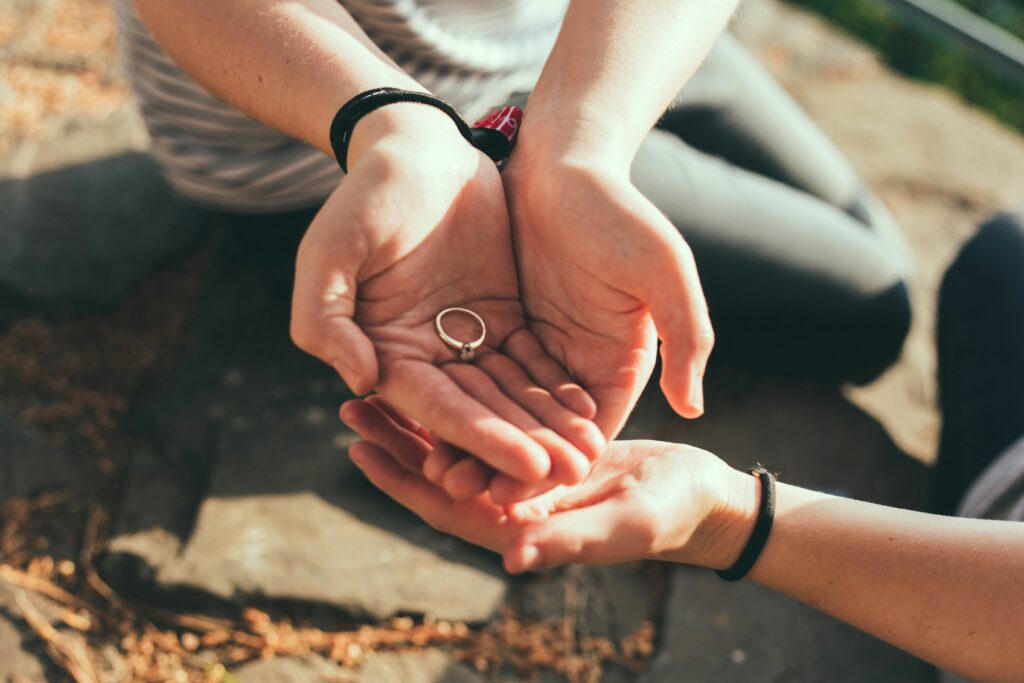
Leap Year Traditions and Superstitions
February 29, 2024

Every four years, the calendar gives us an extra day, February 29th – as a leap day. A quirk of our timekeeping system, a leap year holds a special place for love and romance, full of traditions, superstitions, and the occasional surprise proposal.
In this blog, we explore leap year customs, superstitions and traditional practices that blend with modern day romance. From centuries-old beliefs to present-day perspectives, the leap year offers a unique time to express love, commitment, and the joyful union of two hearts. And for those considering taking the marital leap, Kilminorth is a venue full of enchanting, romantic settings, offering the perfect backdrop for your leap year celebrations.
The roots of leap year traditions linking with love and marriage stretch back through our history to ancient civilisations and cultural beliefs. One of the most notable tales comes from the Roman Empire, where it is believed that Julius Caesar introduced the concept of leap years to synchronise the calendar with the solar year. During this time, women were granted the opportunity to propose to their loved ones on the leap day, a tradition believed to have originated in Ireland. This custom, known as “Bachelor’s Day” or “Leap Day,” challenged societal norms and allowed women a rare chance to take matters of the heart into their own hands. Over time, leap year proposals became coupled with a sense of excitement and anticipation, carrying echoes of old traditions into modern times.
Alongside exciting stories of leap year proposals and weddings are also an array of superstitions. Among these beliefs is the idea that tying the knot during a leap year brings added good fortune to the marriage. It is also thought that proposing on February 29th will ensure a lucky beginning for the engaged couple. On the opposite side, an age-old superstition dictates that if a woman proposes to a man during a leap year and he declines, he must compensate her with either a silk gown or a kiss. While superstitions may vary in their origins and interpretations, they do provide plenty of intrigue and tradition surrounding choosing a leap year for proposals and weddings.

Across different countries and cultures, leap year customs take on many forms, reflecting the unique traditions of each society. In some parts of the UK, the leap year tradition of women proposing to men remains a lively and cherished custom. Meanwhile, in cultures further afield, leap year weddings are believed to bring a particular set of blessings and are eagerly anticipated by couples seeking a lucky start to their life-long marriage.
In some parts of Asia, particularly in countries like China and Taiwan, leap year traditions revolve around the concept of “double happiness.” Couples view leap years as especially auspicious times to tie the knot, believing that weddings held during leap years bring double the joy and good fortune to the marriage. In the United States, leap year proposals have gained popularity as a fun and unconventional way for women to take the lead in expressing their love and commitment. While not strictly adhering to any specific traditions, some couples in America embrace the idea of leap year proposals as a symbol of breaking gender norms and embracing equality in relationships.

Nowadays, leap year traditions have evolved to reflect contemporary values and lifestyles. While the long-standing spark of leap year proposals and weddings remains rooted in tradition, modern interpretations often embrace inclusivity and gender equality. Couples of all genders are encouraged to participate in proposing on this extra calendar day, breaking free from outdated practices, and embracing a more egalitarian approach to love and commitment.
Historically, men have been expected to take the lead in proposing. This stems from old patriarchal structures where men were often seen as the primary providers and decision-makers within relationships and families. However, modern relationships are evolving, and there has been a significant shift away from traditional gender roles. Couples are increasingly embracing a more inclusive approach to love and partnership. Women are now more likely to propose on a leap year, and as a special date in a 4-year calendar, they have been creative, moving away from the traditional male ‘down on one knee’ and instead planning a unique proposal setting, with personal significance. These moments include:
– Using skywriting to write ‘Will you marry me?’ in the clouds
– Creating a custom jigsaw puzzle featuring their photo and the words “Marry me?”
– Planning an elaborate scavenger hunt around their city, leaving clues at meaningful locations throughout their relationship, ending in a proposal destination and photo opportunity with friends.
A perfect destination for both a proposal weekend or a leap year wedding is Kilminorth. Our beautifully historic site is nestled within the enchanting Cornish countryside, a stunning backdrop to any memory-making moment. We have a wonderful array of locations on site where you can celebrate your love, whether you are to be newly engaged on a romantic getaway or joining together in matrimony surrounded by friends and family.
Kilminorth provides both quiet, romantic seclusion, elaborate 3-day celebrations, and everything in between, making your perfect moment as unique and personal as you desire. Our experienced team are on-hand to help you from initial planning right through to the start of your lives together, creating the most beautiful, bespoke experience your love deserves.
We are excited to be sharing this part of your story together, contact us on events@kilminorth.co.uk or explore more about our wedding offerings here.
Leave a Reply Cancel reply
follow us on instagram...
site designed by ebb, flow and grow
Copyright @kilminorth 2025
information
menu
Kilminorth
Looe, Cornwall
PL13 2NE
07850 553280
info@kilminorth.co.uk
Dog-Friendly Business of the Year
- GOLD in 23/24
Wedding venue of the Year
- GOLD in 23/24
BEST OF BRIDEBOOK - SILVER 2024
Terms & Conditions
Privacy Policy
Cookie Policy
Sustainability Statement
Gift Vouchers
Access Statement
Be the first to comment